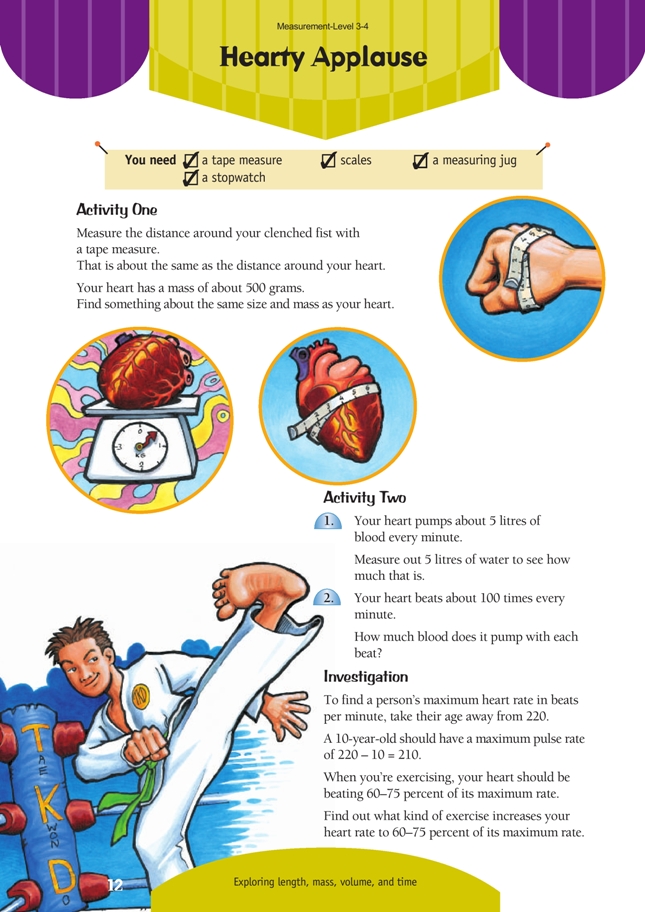A PDF of the student activity is included.
Click on the image to enlarge it. Click again to close. Download PDF (300 KB)
solve problems involving mass, capacity, and time
tape measure
scales
FIO, Level 3-4, Measurement, Hearty Applause, page 12
measuring jug
stopwatch
Activity One
The students may like to model their hearts using 500 grams of playdough. They could make a core using newspaper and build up the heart model with the dough. Ask them to try and make the distance around the heart the same as the distance around their clenched fist. Alternatively, they could weigh and measure objects at home or school to find something the right shape and size. For example, they could try a 500 gram pack of butter, a shot put, a hockey ball, a stone, or a hacky sack.
Activity Two
Measuring 5 litres will help the students visualise how much blood their heart pumps per minute. After they have done question 2, they could measure 50 millilitres to see how much blood their heart pumps with each beat.
Investigation
Before the students begin the investigation, discuss with them ways to accurately take their pulse. They may like to work in pairs, with one person taking the other person’s pulse or one person timing while the other person takes their own pulse.
If the students are trying various exercises to test out their pulses, make sure they do not try to exceed the 75% of the maximum rate for their age. Students with colds or other viral symptoms should not participate in these physical exercises, but they could do some research on the subject.
Repetitive, aerobic exercises are the easiest way to increase the pulse to the desired heart rate. Jogging, skipping, cycling, and fitness circuit activities would all be useful.
Answers to Activity
Activity One
Practical activity
Activity Two
1. Practical activity
2. About 50 mL Investigation
Answers will vary. Activities could include running,
jumping, skipping, cycling, and swimming.
